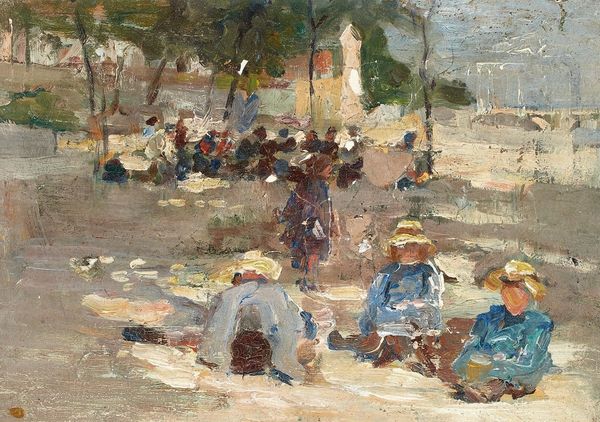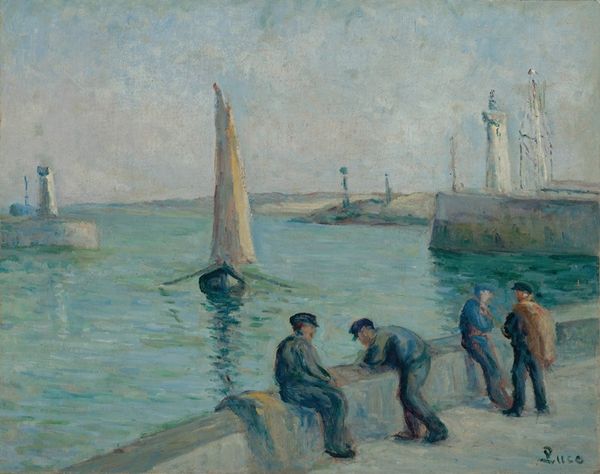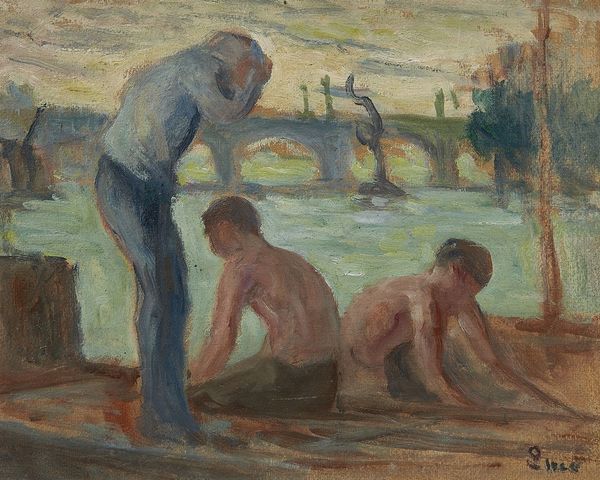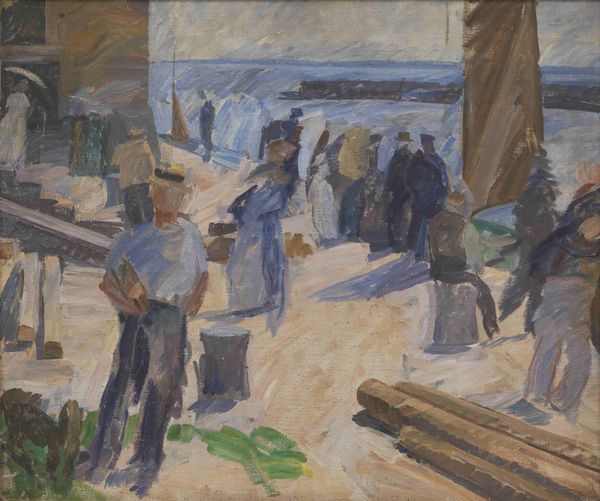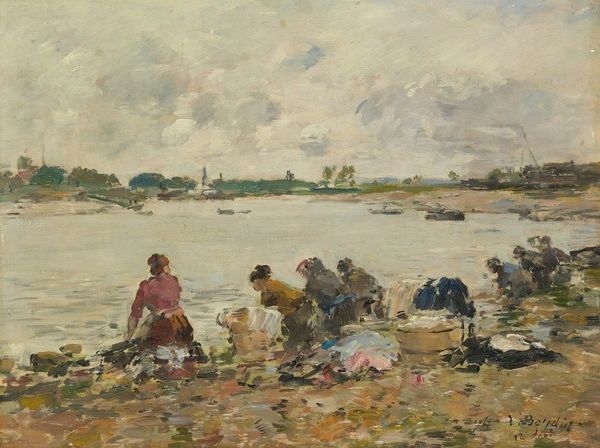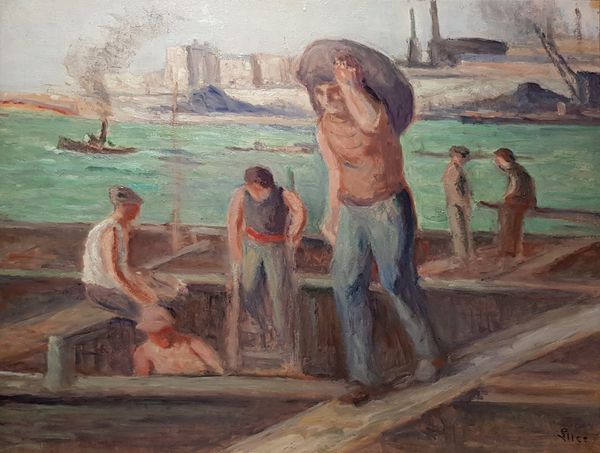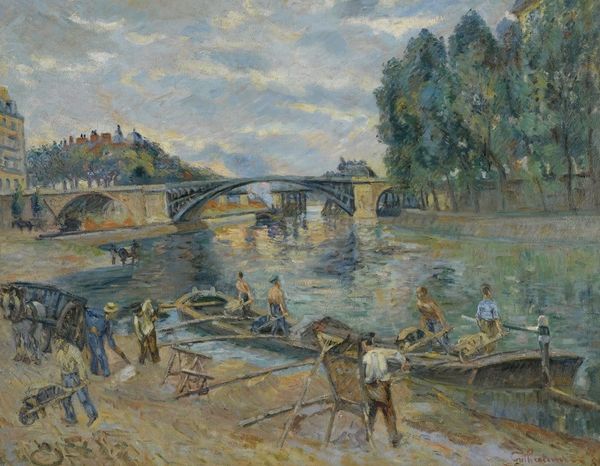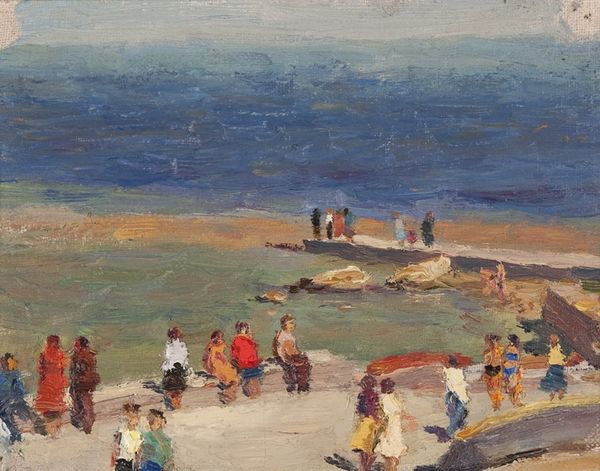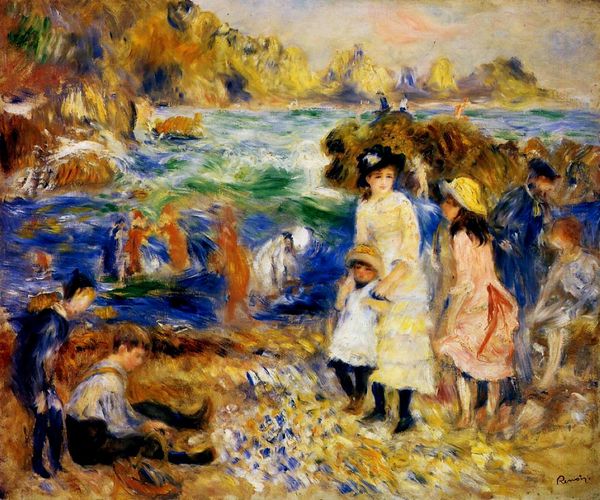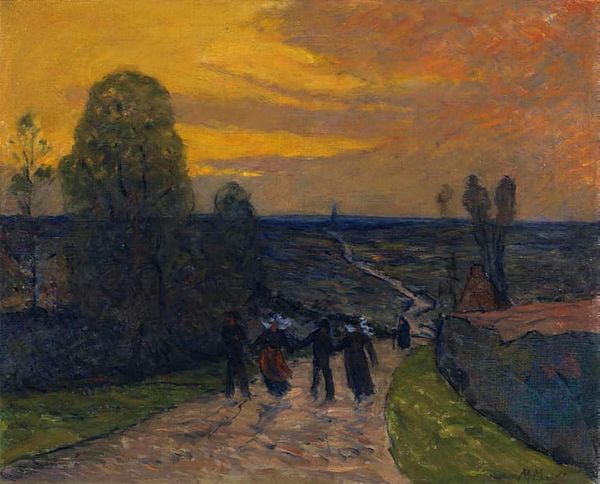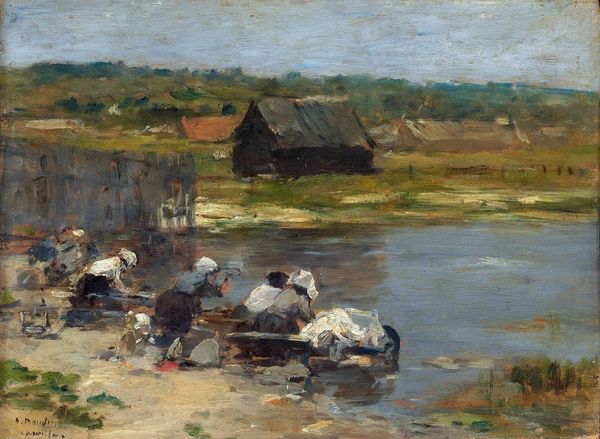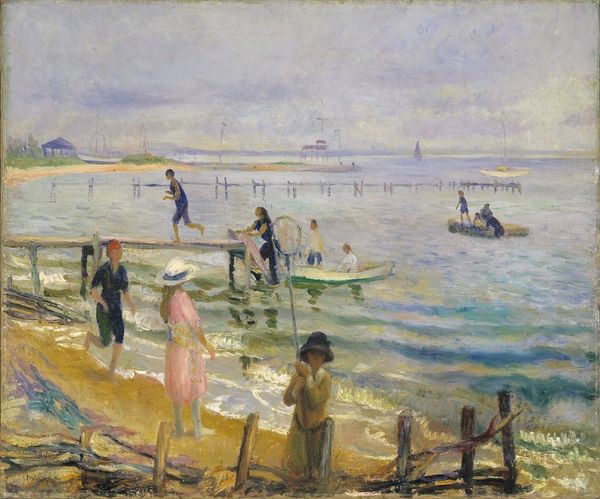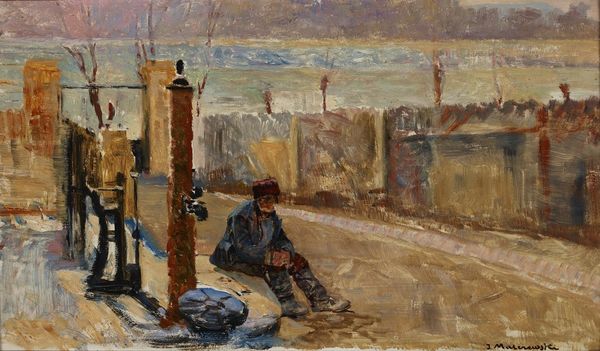
Copyright: Public Domain: Artvee
Editor: Here we have Maximilien Luce's "La berge du quai Malaquais", an oil painting completed before 1936. The figures along the riverbank look very ordinary, but something about the thick brushstrokes makes them seem weighty. How would you interpret this work? Curator: Looking at Luce's use of oil paint, particularly his broken brushwork, I am immediately drawn to the question of *how* this image came into being. Consider the social context: plein-air painting in the late 19th and early 20th centuries democratized artmaking. Artists left the studio to engage with everyday life, capturing it *as* it unfolded. Does this immediacy change our reading of a seemingly standard landscape? Editor: It does give a sense of reality. How important is this materiality to understanding his landscape and cityscape paintings in general? Curator: Hugely! Think about what it means to portray urban workers in a style typically reserved for landscapes of the wealthy. Luce elevates their existence by depicting it with the same techniques and materials once solely employed for “high art”. This disrupts hierarchies and invites viewers to consider the social fabric interwoven with the materiality of labor itself. What happens to art, when all manner of content is painted with the same material presence? Editor: That's a compelling perspective. I hadn't considered the materials themselves as carrying so much social weight. Seeing his art now in this context shows the democratizing power of not only plein air techniques but oil paints, and this focus enhances our appreciation for its cultural values. Curator: Precisely. It transforms a simple scene into a statement about value, representation, and the very act of making.
Comments
No comments
Be the first to comment and join the conversation on the ultimate creative platform.
